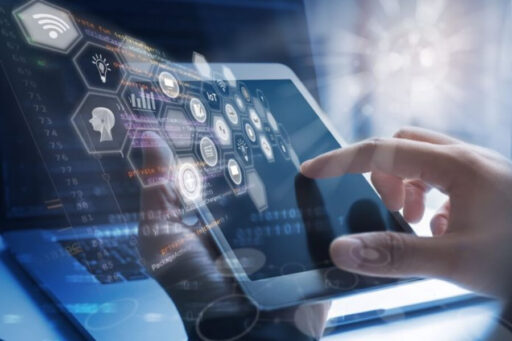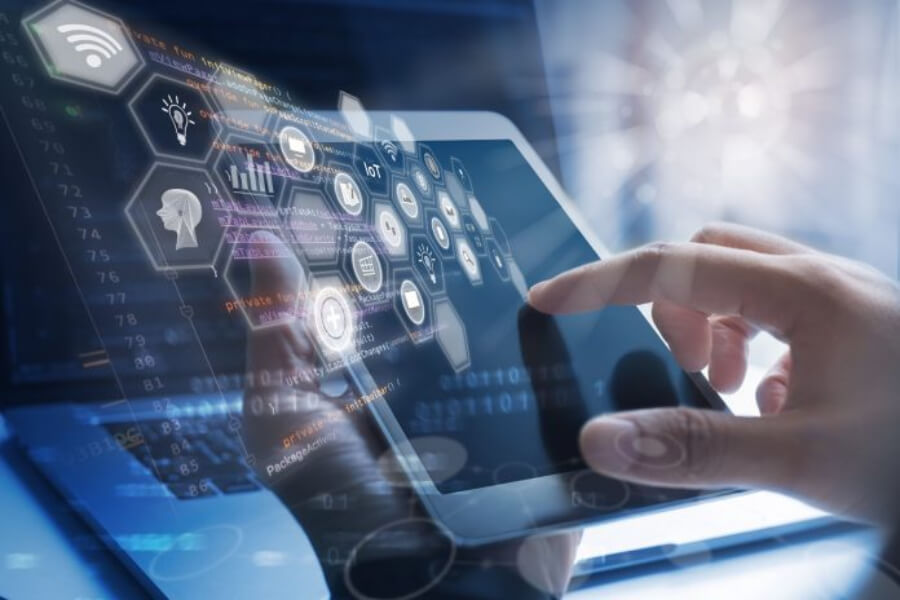These days, the average person can’t live without most of the modern technologies we use on a daily basis. We’re so dependent on certain technological advances that if they were to suddenly disappear, we wouldn’t know what to do. But that’s not necessarily a bad thing. Sure, we may be overly dependent on them, but we depend on many things in life. We depend on the sun, the planet’s core, its atmosphere, clean water, food, and many other more natural things. If we’re so dependent on other things, why wouldn’t humanity aim to take full advantage of the technological advances it has made?
Modern technology solves many of the problems we face daily. It provides jobs for the unemployed, helps doctors save lives, makes people’s lives more convenient, and entertains us. What’s not to love? The 21st century is considered the most advanced era in human life. There’s a good reason why people think this. We’ve managed to replace huge computers that took up entire rooms with a single portable device that can fit in a pocket. Vehicles have become more efficient thanks to artificial intelligence. Better automation in manufacturing. There are tons of other technologies that improve our modern lives, but which ones are the most important?
1. Information at the touch of a button
If you were to ask scientists what the most important discovery or creation of the 21st century is, they would all say the internet. This global system of computer networks has changed the way the entire world functions. What was once unimaginable has become the norm in our modern lives.
Before the internet became a standard in everyone’s home, the only way to get information was through libraries and encyclopedias. Today, all you have to do is take out your phone, type in the information you want to find, and you’ll get it in seconds.
You can use it to find out the latest news, find information about your university research paper, search for jobs and submit a job application, look for cooking recipes, and almost anything else your mind can come up with. You won’t have to leave the comfort of your home if you want to read a new book. All you have to do is log in and download it. And if you prefer paper books to e-books, you can simply order it and it will arrive at your door in a day or two.
It’s truly incredible how much the internet has changed our lives.
2. It can save you time
Having these powerful portable devices, more commonly known as smartphones, in our pockets saves us a lot of time. For example, you’re traveling to an unfamiliar city or country and need to navigate to a certain destination. Pulling out a paper map every time you need to take a turn is impossible, so you end up taking the wrong turn multiple times. Thanks to smartphones and their access to the internet and GPS, you can easily navigate to your final destination. With the touch of a button, the map app will plan the fastest route for you.
Another great time-saver is access to calculators, text documents, spreadsheets, PowerPoint presentations, flowcharts, and more. Businesses and training centers can use these types of documents and files to provide employees or students with important information. Many people enjoy using flowcharts. Diagrams to explain a specific process or workflow. Here you can see tools that allow you to create such flowcharts.
With such easy access to information, we are constantly saving several seconds that accumulate into hours or even days after a certain period of time.
3. Faster and safer transportation
Of course, cars, trains, or airplanes weren’t invented in the 21st century, but we’re constantly making more and more technological advances in these areas.
Cars are constantly getting faster, but they’re also much safer in terms of accidents and collision avoidance. Some more expensive models are equipped with lane tracking, collision warning, pedestrian warning, and many other features that help drivers avoid traffic accidents. Tesla even has its own Autopilot that can get you from point A to point B without ever pressing the brake or accelerator pedal.
Just five or six years ago, the idea of an autopilot in a car was unimaginable, and Tesla made it possible. Naturally, all other car manufacturers are following in their footsteps, which means that autopilots will become much more important in a few years.
4. Communicate better
Just 20 years ago, a cell phone was a rarity. You’d have to be wealthy, or at least upper-class, if you wanted to afford a device that could call anyone, anywhere.
The first commercially available cell phone was released in 1973 by Motorola. During the 1980s and 1990s, we didn’t see much development in this area, but the 2000s were a different story. In the 2000s, we witnessed a complete change in the mobile phone industry. Devices became much smaller and much lighter. With the reduction in size and weight, they also became much more affordable and easier to manufacture. Suddenly, everyone started buying them. Fast forward to 2007, and Apple released the first “real” smartphone, the iPhone.
After this breakthrough, Android started releasing its own smart devices. The constant competition between Apple, Samsung, Nokia, and all other Android devices is what led us to today’s phones.
Improving education
Technology has transformed the educational landscape by making learning more accessible and interactive. Online learning platforms, distance learning courses, and digital educational resources allow students to access a vast amount of knowledge from anywhere in the world. Interactive tools such as videos, simulations, and online quizzes make learning more engaging and personalized, meeting individual student needs. Additionally, technology facilitates collaboration between students and teachers, fostering a dynamic and participatory learning environment.
An interactive and personalized approach
In addition to accessibility, technology has made learning more interactive. With the integration of videos, simulations, and collaborative tools, students can interact with content dynamically. This interactivity also allows for personalized learning, where each student can progress at their own pace, optimizing teaching effectiveness and engagement.
5. Less pollution, more profitability
Unfortunately, in the 20th century, people had no idea how much damage we were doing to planet Earth. Constant pollution from airplanes, factories, trains, tankers, and cars is leading to a damaged atmosphere and a polluted ocean that could lead to our extinction.
However, in the 21st century, we have begun to become more aware of our actions and the ways we can begin to save the Earth. We are becoming much more efficient when it comes to using materials and fossil fuels, and the pollution levels coming out of factories are also significantly reduced and filtered. Over time, humans are reducing pollution levels and increasing their profitability.
Precision agriculture: Using sensors, drones, and other technologies to monitor crops helps reduce food waste and optimize resource use (water, fertilizers). This helps reduce pollution linked to intensive agriculture, such as greenhouse gas emissions and soil and water contamination.
Waste treatment technologies : Innovations in waste management, such as improved recycling, waste-to-energy, and smart composting systems, help reduce ocean and soil pollution. These technologies also contribute to reducing the amount of waste sent to landfills.
One of the major benefits of modern technology in the fight against pollution is the advent of electric mobility. Electric vehicles, such as electric cars, scooters, and buses, significantly reduce greenhouse gas emissions and air pollution compared to combustion engine vehicles. These vehicles produce less CO2 and particulate matter, which helps improve air quality in urban areas and combat the effects of climate change. The rise of these electric technologies is a key step in making transportation more environmentally friendly and sustainable.
Communication Revolution
Technology has profoundly transformed the way we interact and communicate on a daily basis. With the advent of smartphones, social media, and instant messaging platforms, communication has become more accessible, faster, and more global. These tools have eliminated geographical barriers, allowing for real-time exchanges with people around the world. Thanks to video conferencing, it is now possible to participate in business meetings, chat with distant relatives, or even learn about new cultures without leaving the comfort of your own home. Technology has thus created an interconnected global network, fostering the sharing of ideas and experiences that transcend physical boundaries.
Instant connectivity
Technology provides fast and constant access to means of communication, reducing physical and temporal distances between individuals. Thanks to smartphones, social media, and instant messaging apps, it’s possible to stay in touch with loved ones anywhere in the world in just a few seconds.
Easier access to information and knowledge
Alongside the communications revolution, technology has dramatically simplified access to information and knowledge. The internet, in particular, has become a vast virtual library where a plethora of educational resources are available at the click of a button. Whether for academic research, practical tutorials, or online courses, everyone can now deepen their knowledge according to their interests and needs. This democratization of access to education has the potential to reduce disparities and foster intellectual development on a global scale. Thus, technology is positioned as a powerful catalyst for intellectual emancipation and the dissemination of knowledge.
Strengthening social ties
Technology has revolutionized the way we interact with others. Thanks to modern communication tools like video calls, instant messaging, and social media, it’s easier than ever to stay connected with loved ones, no matter where they are in the world. This instant connectivity strengthens social bonds by enabling regular and meaningful interactions, even when physical distance is a barrier. By facilitating remote communication, technology plays a crucial role in preserving personal and professional relationships, contributing to a more enriching and fulfilling modern life.
Dependence on new technologies
We are dependent on many modern technologies that make our lives easier. If some of these technological advancements were to disappear, we would be lost. This dependence on technology is not necessarily a bad thing since we also depend on other natural elements like the sun, clean water, food, etc.
Technological progress and its impacts
Technological advances have solved many of the problems we face every day, from quickly finding information on the internet to saving time with smartphones. Modern technologies have also made cars safer, faster, and more efficient.
Internet and blockchain
One of the most significant technological advances of the 21st century is the internet, which has changed the way we access information and interact with the world. Previously, you had to go to the library or use an encyclopedia to find information, but today, you can simply pull out your phone and search the internet to get results in seconds. Added to this are the use of blockchain and AI, which are revolutionizing the way we manage our daily lives, and the speed at which future technologies are developing.
Smartphones are also very useful for saving time, whether it’s navigating the city using a map app or accessing important documents. Cars and trains are becoming faster and more efficient, but above all, safer thanks to technologies such as collision detection and driver assistance systems .
The use of technology can have both positive and negative impacts, and it is the way we use it that can make its impact harmful to our environment. Thus, with good ethics and awareness of use, we can take advantage of it to help society and millions of people in need.



